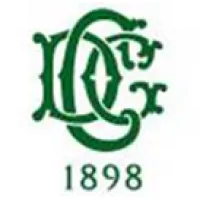Course Description
In the early 1890s, wealthy railroad financier and shipping magnate George Washington Young discovered the Jersey Shore and purchased 135 acres in West Deal where he built a magnificent estate. Young was among a pioneer group that established the first golf course at the shore, nine holes designed by Lawrence Van Etten. The original nine holes with minor changes now play as the 1st, 2nd, and 12th through 18th holes. Young and associates played the course for three years before organizing as the Deal Golf Club in 1898. They then built the clubhouse which remains the oldest in continuous use in New Jersey.
Deal expanded its golf facilities in 1899 by building a short nine-hole course exclusively for women, and added a second nine to the main course in 1900. The new course measured a “staggering” 6,495 yards and was considered the second longest course in the country. By 1903, there were nearly 600 members including summer visitors; annual dues were $25; visitors paid $1 per day; and the links were open year round. Other non-golfing activities included boating on Deal Lake, archery, croquet, tether ball, tennis, and lawn bowling. In five short years, the club established itself as the most notable social centre of the entire northern shore. Prominent members at this time included Robert Todd Lincoln (son of President Abraham Lincoln), Colonel George Harvey (editor of Harper’s Weekly), William C. “Will” Durant (founder of General Motors), and honorary members, former Presidents Benjamin Harrison and William McKinley.
During these early years, many of the game’s greats competed on the highly acclaimed course. Players included five-time British Open Champion J. H. Taylor, the talented amateur Walter Travis, and the 1910 U.S. Open Champion Alex Smith. They competed in various exhibition and regional competitions hosted at Deal including the Metropolitan Amateur and Open, New Jersey State Amateur, and The Deal Invitational.
By 1912, Young experienced financial problems that forced him to sell his estate to the Hollywood Golf Club. This cost Deal its 4th, 5th, and 6th holes which now play as Hollywood’s 16th, 14th, and 15th respectively. A major revision was overseen by legendary golf course architect Donald Ross. Ross replaced them with what now play as the final six holes on the front nine and changed the 17th and 18th to their present par four-three finish.
The club’s “golden years” flowed smoothly into what is now called the “Arend Era.” Francis J. “Frank” Arend was club president from (1917 – 1942) and was affectionately known as the “benevolent czar.” During an extended period of crisis (1929 – 1942) due to the stock market collapse, Arend kept the club afloat. He assumed many of the club’s daily responsibilities and would make up any budget deficits and pay the salaries of employees when needed. Arend gained sole ownership of the club in 1942 but his untimely death put the club’s future at risk. A small group of devoted members led by Thomas F. McCarthy entered into negotiations with Arend’s heirs and gained control of the club in early 1943. The club was reorganized and the name was changed to the “Deal Golf and Country Club.”
It was during this time the club’s most accomplished golfer made his presence known. Vic Ghezzi, who served as golf professional from (1935 – 1941), grew-up in Rumson and would distinguish himself playing the PGA Tour. He amassed an impressive record while on tour, winning twelve times and playing on three Ryder Cup Teams. In addition, he won both the New Jersey Open and NJPGA Championship three times as well. However his greatest achievement took place in 1941 at Cherry Hills C.C. in Denver, CO where in the finals, he beat Byron Nelson on the 38th hole to win the PGA Championship. Years later Ghezzi would be inducted into the PGA and NJPGA Hall of Fames and to this day, is recognized as the greatest golfer from the state of New Jersey.
During the years 1956 – 1966 membership grew to a point where the original clubhouse no longer satisfied its current needs. In 1957 an “ad hoc” committee was formed to devise a modernization plan that would substantially upgrade the clubhouse. Phase One consisted of expanding the dining room and cocktail lounge along with air conditioning the entire building. Phase Two involved building a new wing which included a men’s grill and locker room, card room, pro shop, and storage below for golf bags and carts. A short time later, the ladies locker facilities would also be renovated.
In 2000, golf architect Kelly Blake Moran was hired to restore many of bunkers and tees that had become worn from years of play. Changes were made to the 12th, 13th, and 15th holes, however the course generally plays as it did nearly one hundred years ago.
Deal would continue its rich tradition of golf excellence in 2006 when it hosted the New Jersey State Amateur for the third time. That same year our current golf professional, Jason Lamp, would follow in the footsteps of Vic Ghezzi and win the 86th New Jersey Open Championship at Hollywood G.C.
Now well into its second century, the pride and sense of obligation to preserve Deal’s traditions and high standards of excellence pervade the membership today, as in years past. Former club president John Kay (1996 – 1998) put it eloquently when he wrote the following about the club’s centennial celebration:
“As we look back one hundred years, we have to wonder if the Club’s founders could have had any idea how many people would enjoy the results of their endeavors for such a long time. It is our legacy from the past, our guidepost for the present, and our gift to the future.”


